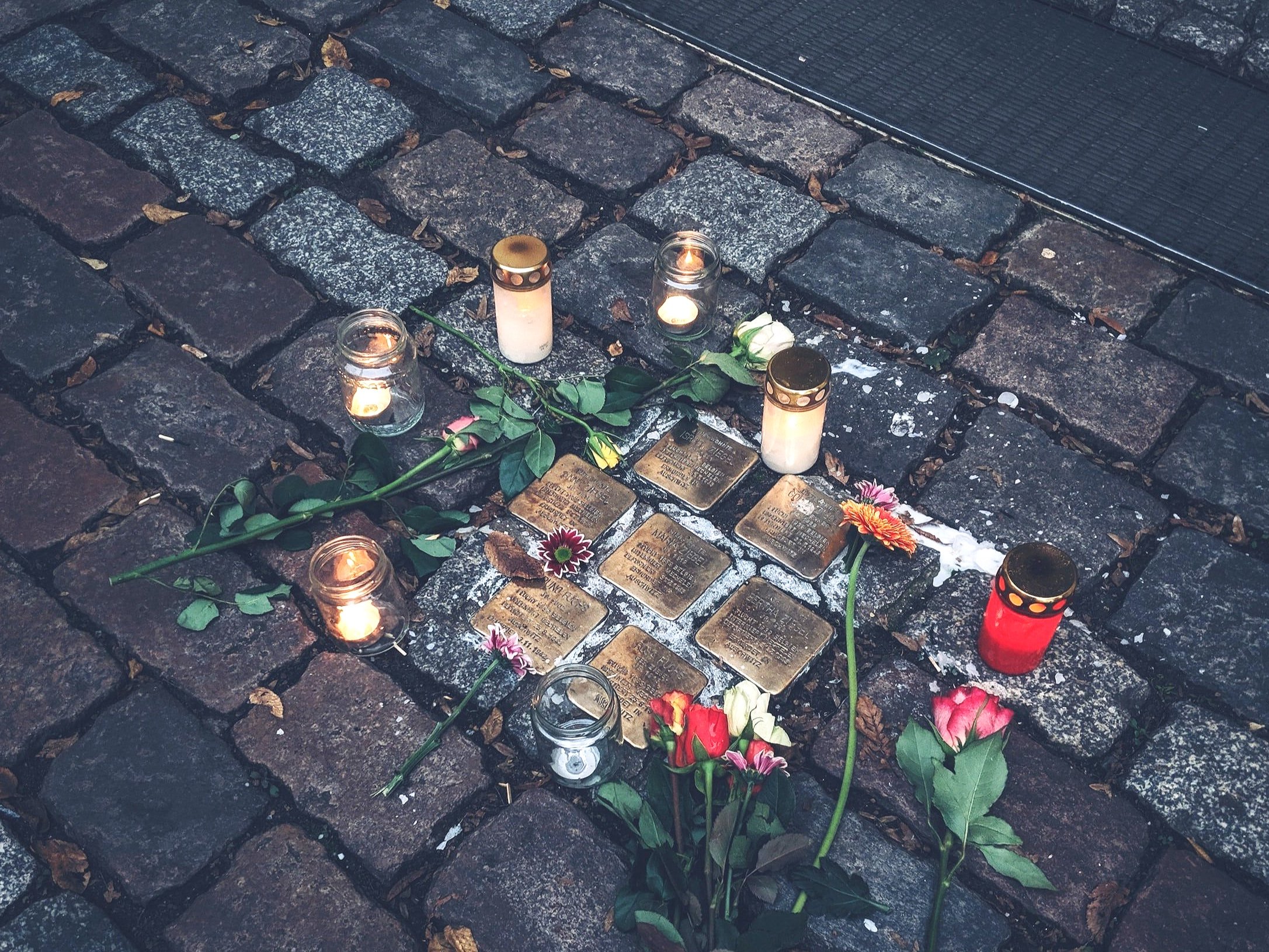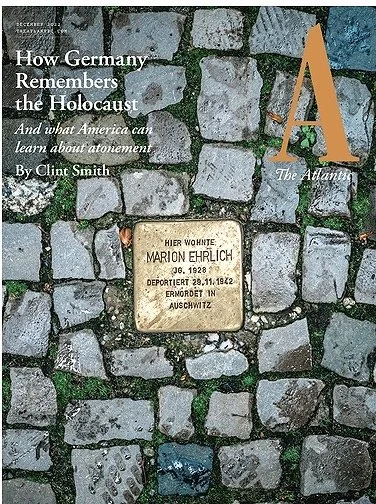Our daughter Hanna now has a small stash of yellow coins on the windowsill here in Berlin. They get her rides on the kiddie carousel at the large Christmas Market down the street. Christmas Markets spring up all over Germany (and much of Europe) in town squares or blocked-off streets beginning around the 1st Sunday of Advent and sometimes last until the week after Christmas. About twice a week we stop by ours to get some mulled wine, perhaps buy some crafts, and of course, watch Hannah go for a round or three in the fire truck on the carousel. I will cherish these memories of Hannah’s first winter in Berlin.
But in this neighborhood, in between a large Jewish cemetery and a memorial to the Berlin Wall, both Christmas Markets and Advent have mixed meanings that are embedded in the same history of empires and their cruelty that suffuse the Christmas story itself: hope within trouble and oppression.
As we walk the two blocks to and from the Christmas Market near us in Berlin, I now often look at the small bronze plaques embedded in the stones of the sidewalk on the way. We had walked these streets many times in the first weeks of our arrival before I noticed roses on the sidewalk, and saw that they were placed next to these plaques. I immediately recognized them as stolpersteine (stumbling stones), memorials to Jews, Roma, and others systematically murdered by the Nazi regime before and right up to the end of WW II in Europe. Each stone marks the last place of voluntary residence of a victim of the holocaust. The roses show up every November 9, the annual memorial day for those killed on Kristallnacht, the night in 1938 that Nazi party militias broke windows and burned Jewish owned stores, buildings, and synagogues, a turning point in the systematic violence of the regime. The flowers are to honor the victims of the holocaust on that day.
This advent, I have begun to view these small plaques as more than memorials, indeed I have come to think of them as embodying hope. I no longer see them only as marking the violence and inhumanity, but also, or perhaps instead, as assertions, markers, and beacons of hope as they unite us with real individuals, their names and where they lived and bring us together with those who planned and installed the plaque and with the living descendants of those memorialized (who are always invited to installations).
Started by a single artist, Gunter Demnig, and now in the streets of many European cities from Greece to Norway, these stumbling stones evoke the personal lives of the victims of the holocaust. There are parallel movements for remembrance that trace their origins to the stolpersteine. And of course there are fierce critics of the memorials, who think putting them in sidewalks where people can walk or drop trash on them is a desecration. A deeper analysis of this controversy is available in a movingly written and thoughtfully reported article in the Atlantic magazine.
I find two hopeful lessons from the story of these stones. First, Demnig started small, beginning with just one stolperstein. Even in the face of great injustice, even when it seems we are incapable of meaningful action, doing something, even something small, can matter. We do not know where it will lead us. In fact, the first stolperstein was not a victim’s name, but simply the first line of Auschwitz Decree, the legal document that began the deportation of Jews to Auschwitz. There are now more than 75,000 stumbling stones across Europe, bearing witness to the individuals.. The first small risk can free us from the self-criticism that weighs down our hearts in inaction and despair. And the risk is there – surely in the wide expanse of humanity someone will disagree and accuse us.
And thus the second lesson: Being criticized feels like failure. But failing to do something because someone will criticize you is itself a failure. We are not called to perfection, but to love. If we act in love we are not protected from criticism, or even failure – but we are protected from despair.
“Advent is not a passive waiting for rescue. It is an active reaching out in hope”
And here is the heart of advent. Advent is not a passive waiting for rescue. It is an active reaching out in hope: celebrating, opening the heart, giving thanks, bringing hope to others, singing, dancing, writing love letters, waiting in silence with an open spirit.
And where does one find hope in this time of renewed war and rumors of war? When justice is denied and hope is crushed? When one’s heart is heavy with loss? One finds it in love. Or more precisely, one finds it by loving action. Installing a stolperstein is an act of love and hope, often bringing together the descendants of the person memorialized. Celebrating, or giving thanks, or singing, or hoping, can too easily be corrupted by self-absorption or escape. It must instead be done in love, it must be rooted in love. May you find the courage to take small acts of love at this unusually long advent season, and thereby nurture hope in yourself and others.
It is love which also is the motivator for our 12 Days of Christmas Online Journey. As Almut walks with you through these days she takes the challenge and courage of writing every day anew, never knowing quite how the journey will go. But this is what this journey is about. It leads us through the dark night to the stable where hope makes its dwelling place. It cannot be done without walking the walk, without the pain of laboring and birthing. It needs courage to every time start anew again.
You will not be surprised to hear that this courage must be rooted in relation to the loving eternal. But you may be encouraged by love to see, and to embody, the small and large acts of courage that are seen throughout the Christmas story.
Joining our journey can be your small act of loving courage, and will be an encouragement to us as we lead you in daily meditations for the 12 days of Christmas. Please do, take courage, and join us.
With love and hope,
Chuck (with Almut & Hannah)



